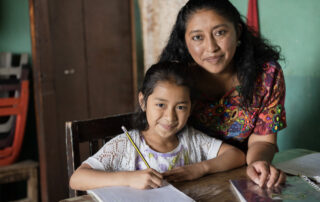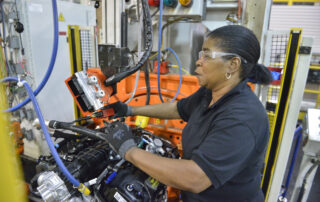Poverty and Opportunity
The equal participation of women in politics and government is integral to building strong communities and a vibrant democracy in which women and men can thrive. By voting, running for office, and engaging in civil society as leaders and activists, women shape laws, policies, and decision-making in ways that reflect their interests and needs, as well as those of their families and communities.
Today, women constitute a powerful force in the electorate and inform policymaking at all levels of government. Yet, women continue to be underrepresented in governments across the nation and face barriers that often make it difficult for them to exercise political power and assume leadership positions in the public sphere. This chapter presents data on several aspects of women’s involvement in the political process in the United States: voter registration and turnout, female state and federal elected and appointed representation, and state-based institutional resources for women. It examines how women fare on these indicators of women’s status, the progress women have made and where it has stalled, and how racial and ethnic disparities compound gender disparities in specific forms of political participation.

Details
Map Description, legend or descriptive text
Section Links
Political Participation Rank and Score by State
For the Class of 2023 in the NE, State Abortions Laws Are a Key Factor in College Decisions, ACCORDING TO NEW IWPR POLL
State laws banning abortion are becoming a factor for students in the northeast considering attending college out of state. A recent poll commissioned by IWPR and conducted by Morning Consult found that seventy-six (76) percent of students polled do not want to attend school [...]
Underwater: Student Mothers and Fathers Struggle to Support Their Families and Pay Off College Loans
IWPR conducted original research on an often-overlooked group of students—parents with children—as they struggle to make ends meet while pursuing academic degrees and certificates. Student parents often face enormous financial barriers to academic success. They report high financial insecurity including issues with food, housing [...]
The Status of Women in Florida Reproductive Rights
This White Paper provides an overview of reproductive rights in Florida. The report outlines the historical and political context of reproductive rights in the state and summarizes key data and outcomes. The report concludes with policy recommendations and areas for future research. It builds [...]
New IWPR Report Highlights Opportunities to Expand Access to Manufacturing Jobs, Lifts Up the Voices of Women on the Shop Floor
Washington, D.C. —A majority of women who responded to a survey of shop floor manufacturing workers report a largely equitable and harassment-free workplace, according to a new report released today by the Institute for Women’s Policy Research (IWPR). Yet the report also highlights the challenges [...]
Advancing Women in Manufacturing: Perspectives from Women on the Shop Floor
Careers in manufacturing can provide high earnings and good benefits. After years of decline,the manufacturing industry is growing again. Manufacturing employs one in ten workers in the United States but fewer than a third of workers are women,and women are particularly underrepresented in many [...]
New IWPR Polling Shows Strong Support for Congressional Action on Equal Pay, Child Care, Paid Leave, and Women’s Reproductive Health
March 21, 2023 Contact: William Lutz 202-785-5100 Washington, D.C. — Three out of four adults want to see Congress pass laws strengthening equal pay laws, expanding access to child care, and guaranteeing access to paid sick leave, while two of three adults want to see [...]





